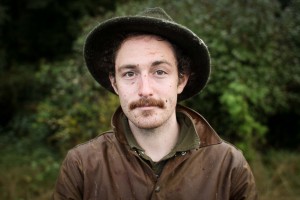
Hacking Meat is an online conversation exploring how can information and technology be used to hack (or reimagine) a more sustainable, profitable and healthy future of meat. Join the conversation and share your ideas or product requests in the comments, on Twitter using #hackmeat, on Facebook or at the Hack//Meat hackathon happening December 7-9 in NYC.
Guest Post by Andrew Plotsky
Meat, colloquially, is the skeletal muscle of animals. We'll call this ‘flesh.’ In the more metaphorical context, the one in which this conversation seems to be framed, 'Meat,' is the entirety of the products, processes and cultural attitudes that make up the complex system of raising animals, turning them into food and delivering them to humans. This, we will call ‘Meat.’
The basic assumption of #hackmeat is that there is something wrong with our past and present of Meat. It is Bad. At the very least, it is not Good enough.
I think this Badness is a direct descendant of divorce, a separation between things that were or ought to be connected.
In the over-romanticized “simple” days of yore, a lot more people were directly involved with some or all of the labour that was required of one's Meat. It is a remarkably strenuous process – physically, emotionally and spiritually.
To raise, process, preserve and prepare your own animals is taxing. This is a principal reason why things have changed so dramatically. Meat is hard to do.
This challenge, the labour and the hardship, is the foundation of one's system of valuing Meat. If you have raised a pig on rotated pasture and organic grain and gotten to know their quirks and gurgles, and chased them down in the middle of the night after they escaped your triple electric wired paddock, you understand that cut-and-wrapped pork is a very valuable thing.
This is the case with any of the trades corresponding to Meat. The labour and engagement in any process helps to contextualize the value of the resultant products. This need not a physically strenuous activity. Type designers understand that text types with contextual ligatures are worthy of praise, as furniture makers understand the worth of a table joined with dovetails and tenons. Value is illuminated by both knowledge and labour.
I don't mean to imply that to raise animals is the only way to fully value Meat. Nor do I mean to say that everyone must do everything, for to foster resilient communities, we need specialists who express artful expertise in their respective trades. What I do mean to say is that, on the whole, most of us have been entirely divorced from Meat.
Now is where I’m supposed to define Goodness and how we do it. Beyond being doubtful of it’s existence, I am, unfortunately, neither smart nor observant enough to give a proper definition. Thus, I will take the road of cowardice and dance around the edges.
What we need more than anything in creating technosavvy Good Meat is to recreate and communicate the value of Good Meat and inspire people to Meaty action.
We need more farmers. We need more ranchers and shepherds. We need more abattoirs and butchers and charcutiers and farriers and smithies and coopers and wheelwrights. There are so many trades necessary to a fluid and healthful Meat, and we need more of all of them.
This movement will not be a backwards one. A non-negotiable phenomenon is that our actions and we are a function of our time. Characteristic of this time are information and technology, and subsequent innovations of them. They are often looked to as the means, and increasingly, the ends, of the forward direction. Progress, I think they call it.
We will never replace our world with a digital one. Nor will we replace experience with information, and our hands will not become computers.
Information and technology will unquestionably be one of the legs on which we walk from here on, but we must not lose sight of the roots of Meat, and the trades that make it possible. We must refocus on placing humans in those roles.
Good Meat will be made possible by the labour of craftspeople who have an intimate knowledge, deep love and full pride in their trades. And we need more of all of them.
My contribution is as a Meatsmith and a media maker.
I believe strongly in the power of storytelling. The more stories we tell of the Good people doing Good work, the more we can prospectively inspire more people to do more Good work.
Technologies have never been more accessible to storytellers. All the devices in our pockets shoot hi-res video and take great photos. We can distribute them for free via innumerable avenues on the internet, through which we have access to all of the people in the world.
As much as we need Meaty tradespeople, we need documentors and communicators to help them spread the gospel.
How are you spreading the “Meat Gospel”? Let us know in the comments, on Twitter using #hackmeat, on Facebook or at the Hack//Meat hackathon happening December 7-9 in NYC
_____________________________
 Andrew is the founder of Farmrun, and works as a Meatsmith on Vashon Island in the Puget Sound.
Andrew is the founder of Farmrun, and works as a Meatsmith on Vashon Island in the Puget Sound.


